WEDNESDAY, AUGUST 13, 2025
- Home
- Pineapple paradise: Molvom, Bungsang farms fuel regional market
Pineapple paradise: Molvom, Bungsang farms fuel regional market
Published on Aug 11, 2024
Share
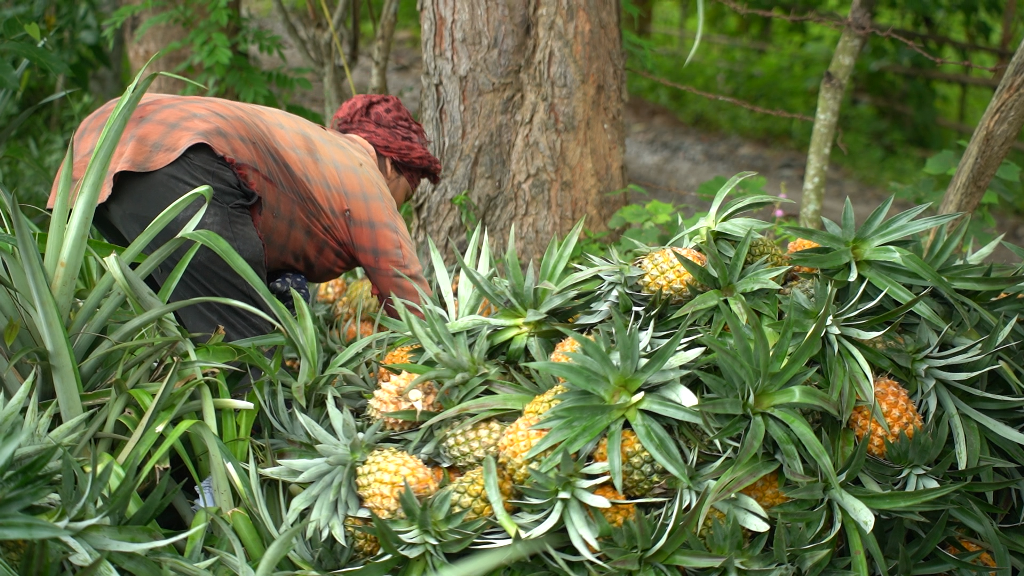
DIMAPUR — During the summer harvest, the roads leading to Medziphema and Jalukie towns transform into lively marketplaces, with vendors showcasing rows of freshly picked pineapples.
This abundance originates from the farms surrounding Molvom and Bungsang villages, which are renowned for producing some of the most succulent and flavourful pineapples in the region.
Every day, scores of vendors can be seen on these busy roads, ensuring a steady supply of fruit. Among them is 31-year-old Sangneilhing Misao, who, along with other vendors, transports anywhere from 100 to 200 pineapples from the farms to the market.
“We group the larger ones together in groups of five and sell them for INR 200, while smaller ones are sold in groups of six or seven for the same price,” she explained.
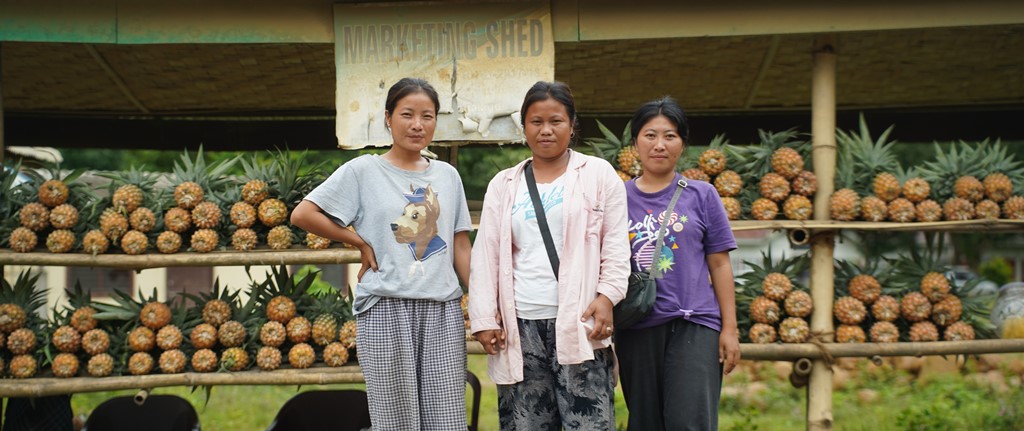
Her customers, hailing mainly from nearby towns like Kohima, Dimapur, and Jalukie, depend on vendors like her for their pineapple fix.
Sales fluctuate with the weather: heavy rain dampens business, while on dry, sunny days, she sells around 200 pineapples.
And while she tries to make the most of her stock, “We discard the rotten ones, use some to make juice, and dry others in a small machine to sell as candy,” she said.
Even when she's not selling pineapples, Sangneilhing remains connected to the fruit, cleaning farms or planting seeds for future harvests. “In a way, I am always occupied,” the vendor said.
Another vendor, Chongneiphal, and her husband bring about 50 to 60 pineapples daily. “Sometimes there are no sales and we earn around INR 400 daily, but on a good day, we can make up to INR 1,500,” the 36-year-old mother shared.
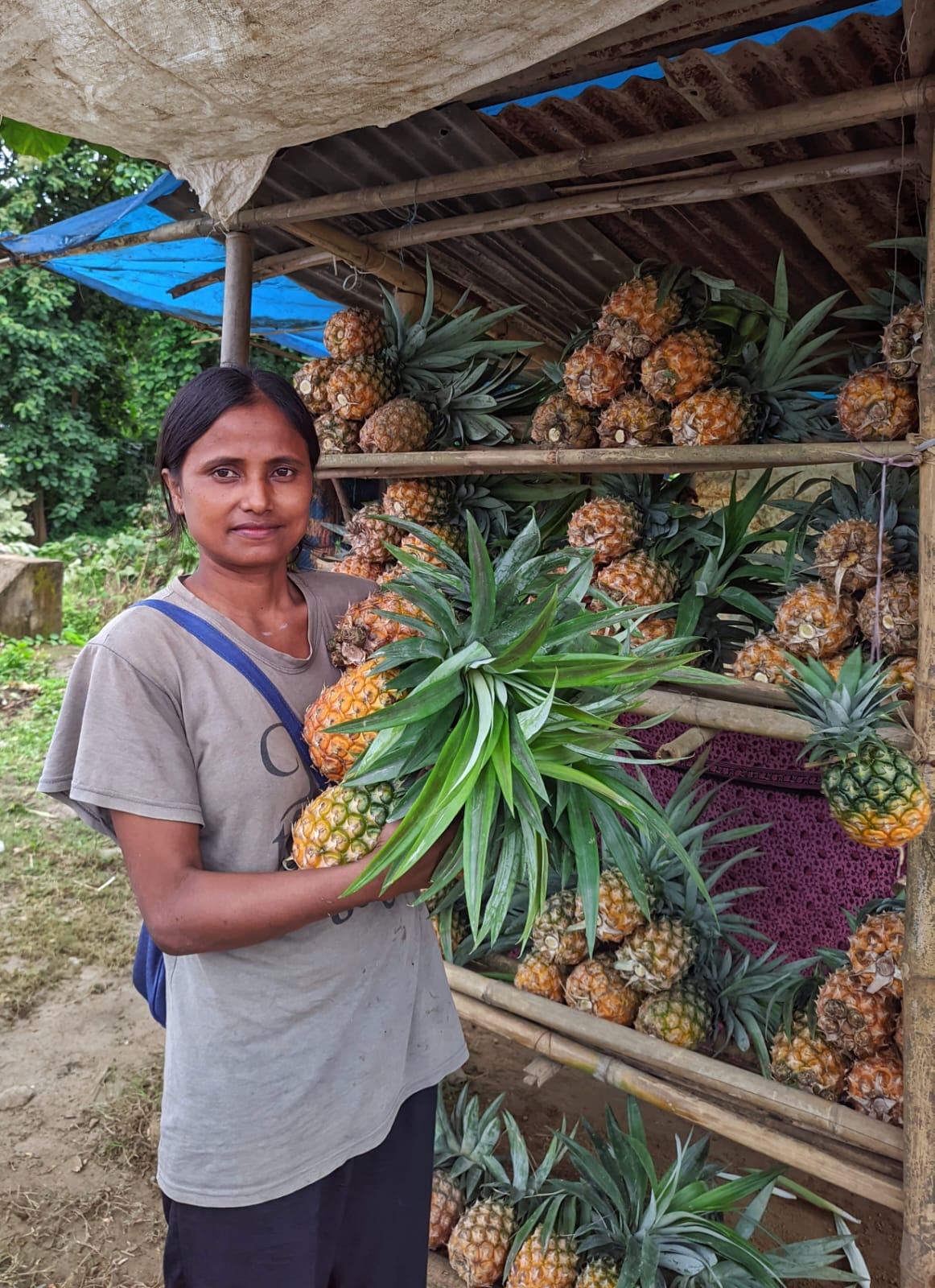
“We have to discard any rotten pineapples because we don't have time to make juice; we have five children to care for at home,” she explained.
“When the pineapple season ends, we weed the farms to earn our daily wages,” she added.
Farm to table: A farmer’s perspective
The livelihoods of these vendors are tied to the efforts of farmers like Chonminlen Buhil, who supply them with pineapples.
The 35-year-old farmer, who was seen harvesting pineapples with his co-workers on a rainy August day, said that he starts his day around 5:00 am. Once harvesting is complete, the team drinks tea and heads back home.
The pineapples begin their own journey, loaded onto vans or pickup trucks, ready to make their way to the markets.
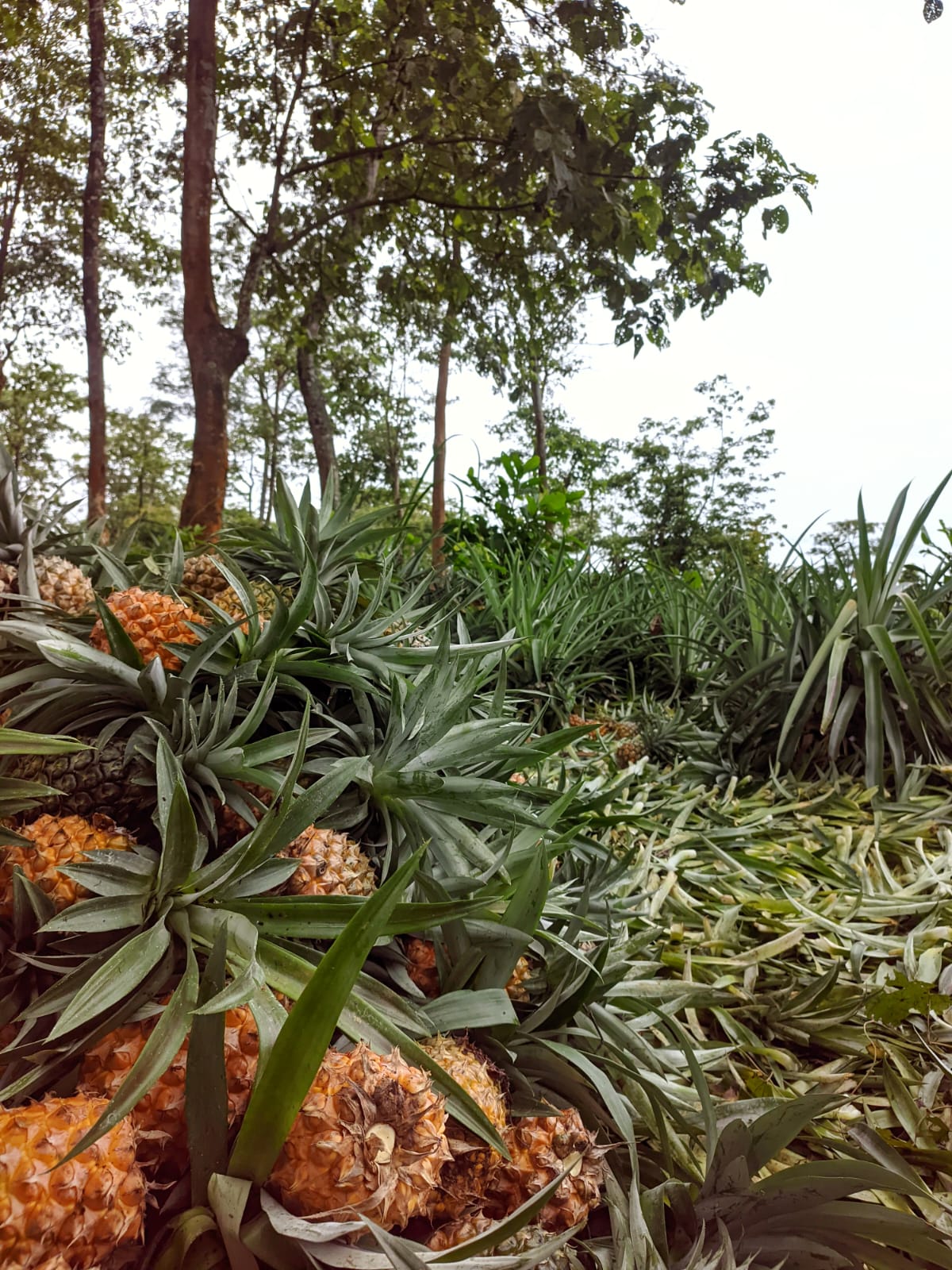
Gesturing across the expanse of the farm, Buhil explained the cyclical nature of their work.
“For instance, if this batch becomes old or worn out, we cut them down, clean the area, remove the leaves, and then a tractor comes in to level the soil. Only then do we plant the new seeds,” he said.
The plant takes nearly two years to fully mature, though some fruits can be harvested within a year, albeit in smaller quantities. Pineapples affected by pests are left behind, while the healthy ones are collected.
The work continues even after the harvest season concludes. Buhil finds himself weeding, clearing debris, and gathering seeds and saplings in preparation for the next cycle of growth.
“Pineapples thrive with both sunlight and water,” he observed, “but extreme heat can spoil them.”
To avoid injuries from the spiky leaves, Buhil and his team wear gloves while harvesting. They also wear protective clothing to prevent cuts on their legs and arms. “With these precautions, the work is manageable,” he added.
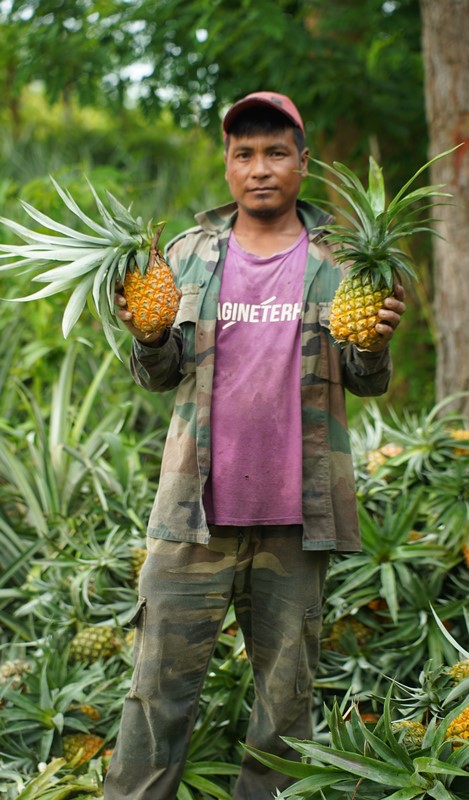
A legacy in pineapples
While Buhil works on a farm owned by another, for some families, pineapple farming is a legacy passed down from one generation to the next.
Take, for instance, 42-year-old Dehtinlen Misao, a third-generation pineapple farmer. The knowledge of cultivating these spiky fruits has been passed down through his family, from his grandfather's hands to his father's, and now to his own.
Misao said there was a shift in the early 1990s when pineapples became the primary source of income for the villagers in Molvom.
“We used to farm paddy, but after seeing the profit and potential, we shifted entirely to pineapple cultivation," he said.
At present, each household in Molvom manages between 25,000 and 30,000 pineapple plants, and his family alone cultivates a three-acre plot that yields about 3,000 fruits weekly.
The Misao family focusses on supplying fresh pineapples to the markets of Assam, particularly Nagaon and Tinsukia.
To guarantee the fruits arrive at market with their sweetness intact, they are plucked just a day before their journey, loaded onto pickup trucks that wind their way from Dimapur to Assam.
The family earns an average of INR 3 lakh per harvest. And while the pineapples are harvested twice—summer and winter—it is the summer fruits that are said to be the sweetest.
Practices and challenges
Misao also shared some details about farm operations, saying that they use plastic mulch for weed control, moisture retention, and soil temperature regulation—a practice not employed in his grandfather's era.
“Back then, they used single lines for planting, but now we use double lines”, he said, adding that every six to eight years, the leaves are removed, dried, and burned to maintain soil health.
He went on to say that there is no secret to the sweetness of these pineapples other than the fertile red soil. Pineapples thrive in warm climates and need proper watering during the flowering season to grow large, he said.
They continue to cultivate the same land for 10–30 years, which gradually reduces soil fertility. Consequently, pineapples grown in these long-cultivated areas tend to be smaller compared to those from newly established farms, he explained.
Misao also observed that support from the Department of Horticulture and other agencies has diminished over time, reducing their access to aid.
Expressing disappointment, he said, “We have approached both state and central governments for assistance in setting up an industry or a factory, but without success.”
The surplus and less desirable pineapples (those consumed by bees) often go to waste or are discarded. However, a factory could help address this issue, he maintained.
When asked about allegations about fertiliser use, both cultivators and farm owners dispelled the claims. An agricultural scientist also told this newspaper that she has not received any information to substantiate such claims.
Misao maintained that the farm uses organic methods.
“We avoid chemicals as much as possible. Instead, we use organic fertilisers, primarily cow manure from nearby farms. To control pests during flowering, we apply neem water, made from freshly plucked neem leaves, boiled, and then used as a spray,” he said.

